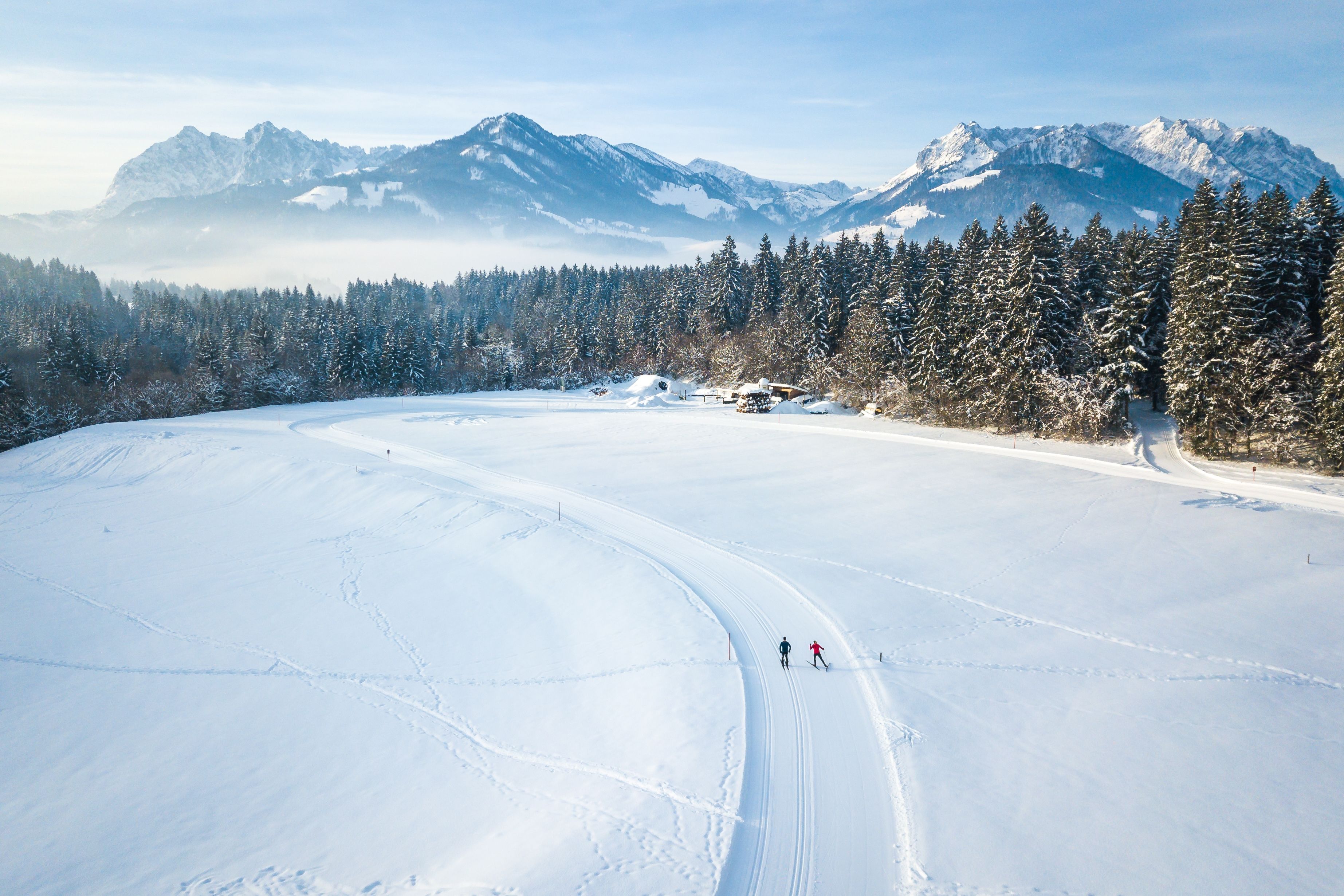For beginners, it is important to first choose an easy, well-marked cross-country ski trail. It is important to have the right cross-country skiing equipment, which is available to hire on site, and to take part in an introductory course to familiarise yourself with the technique and safety on the trail.

